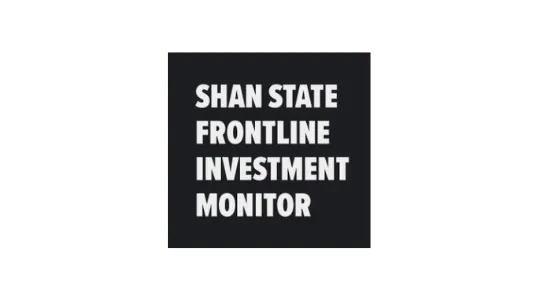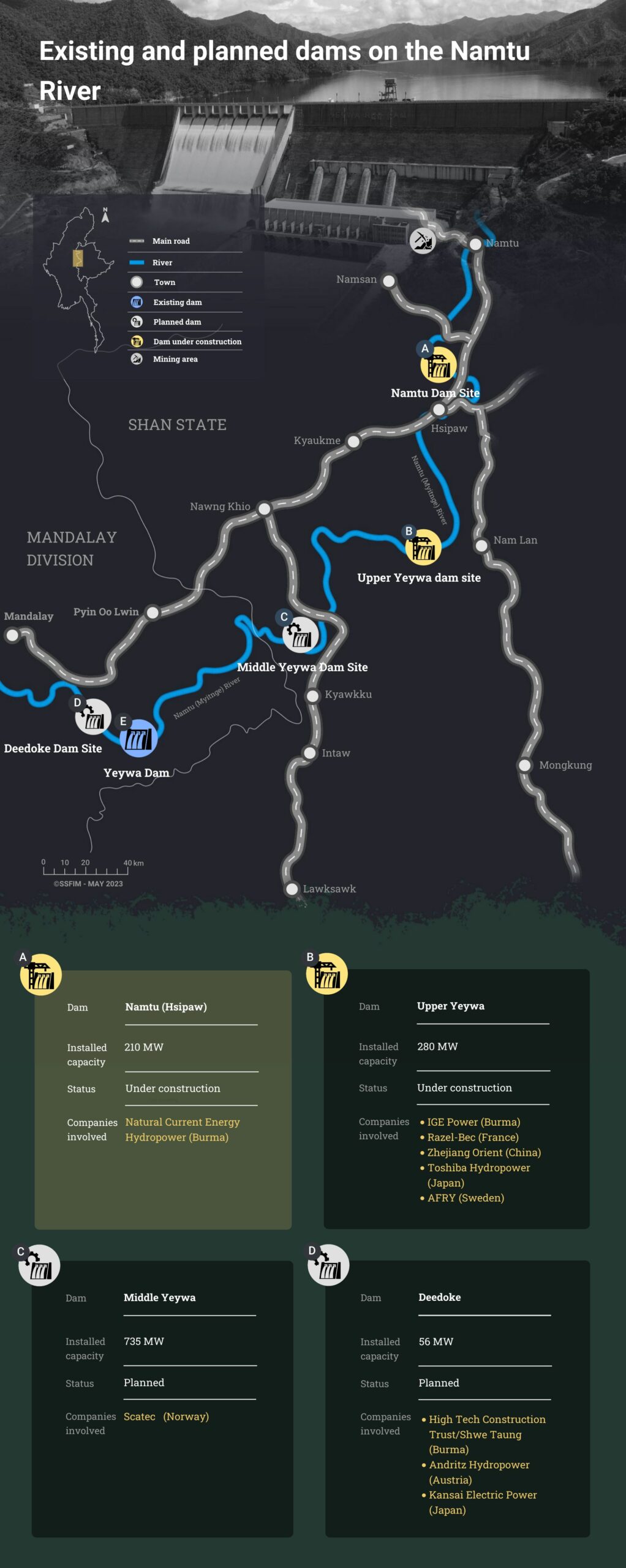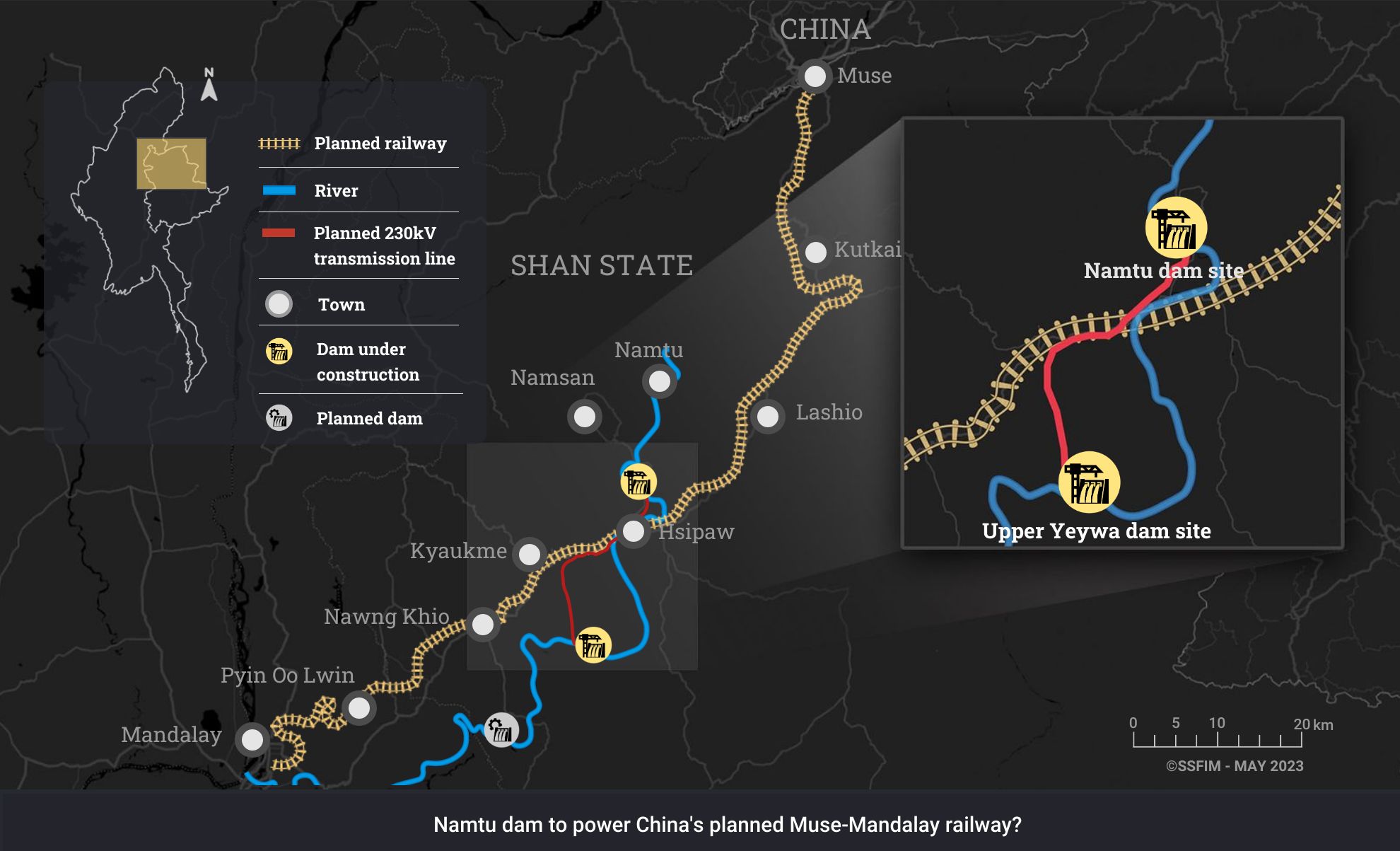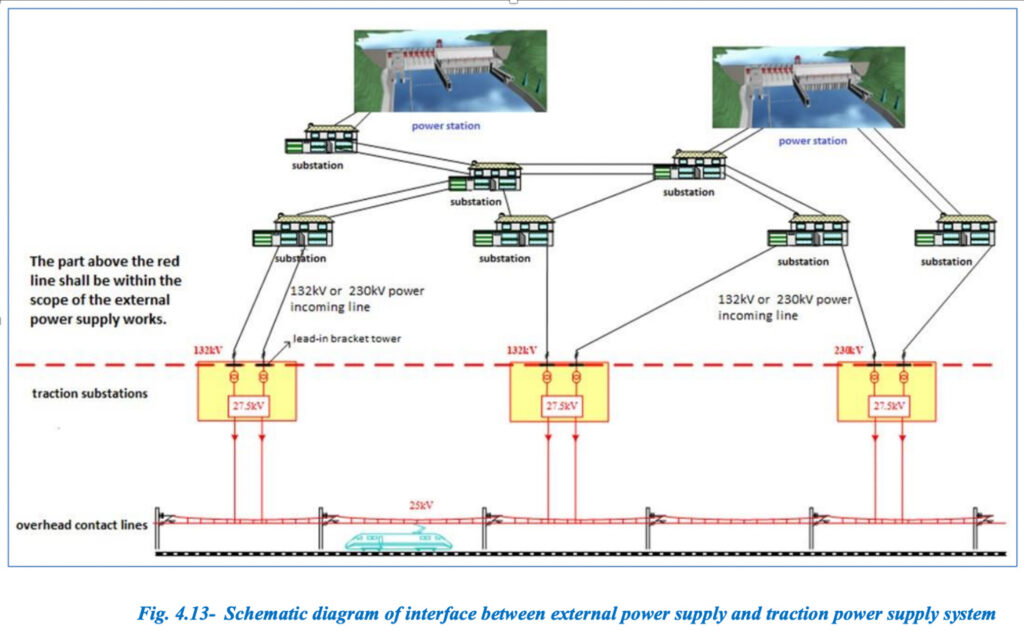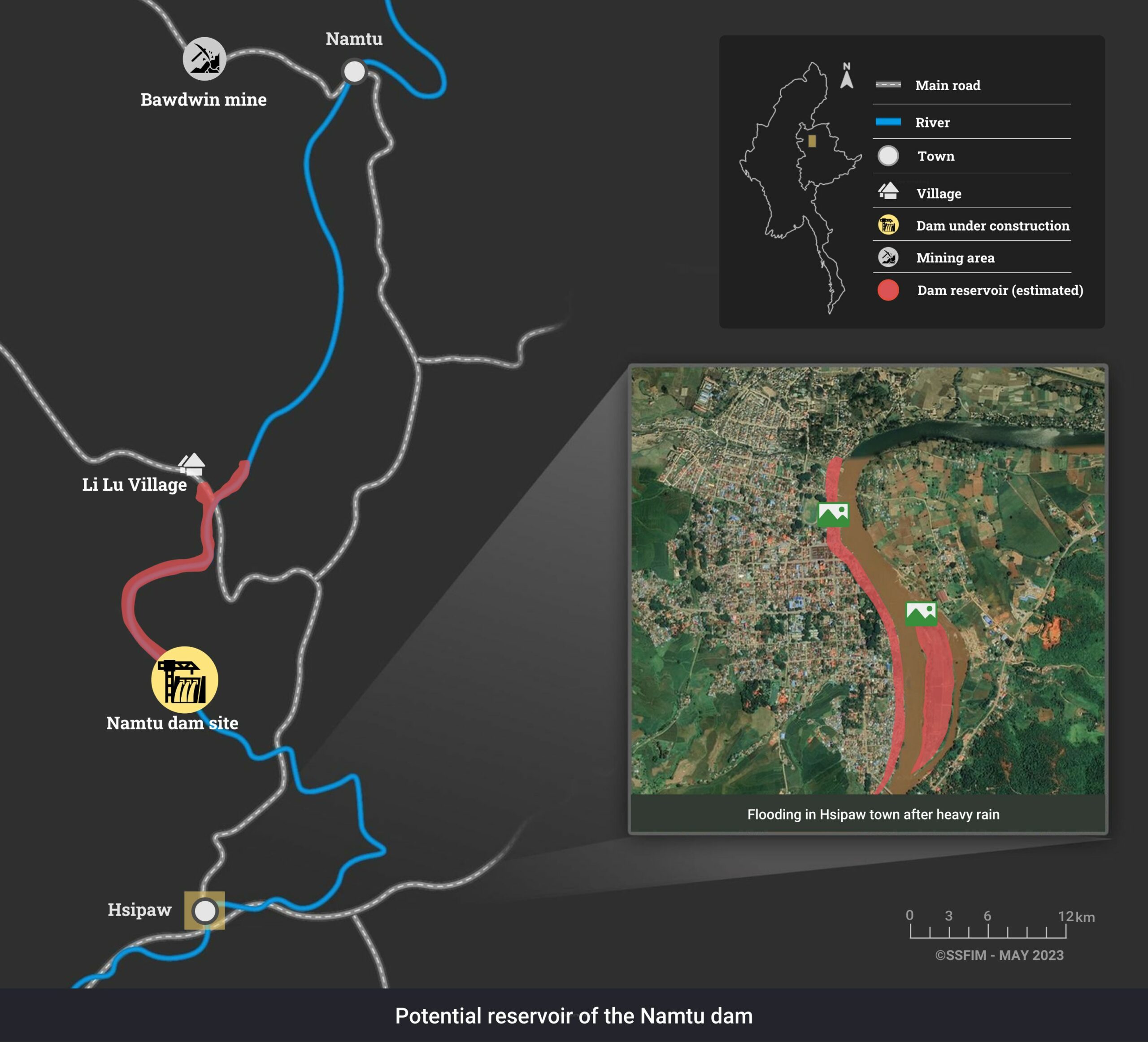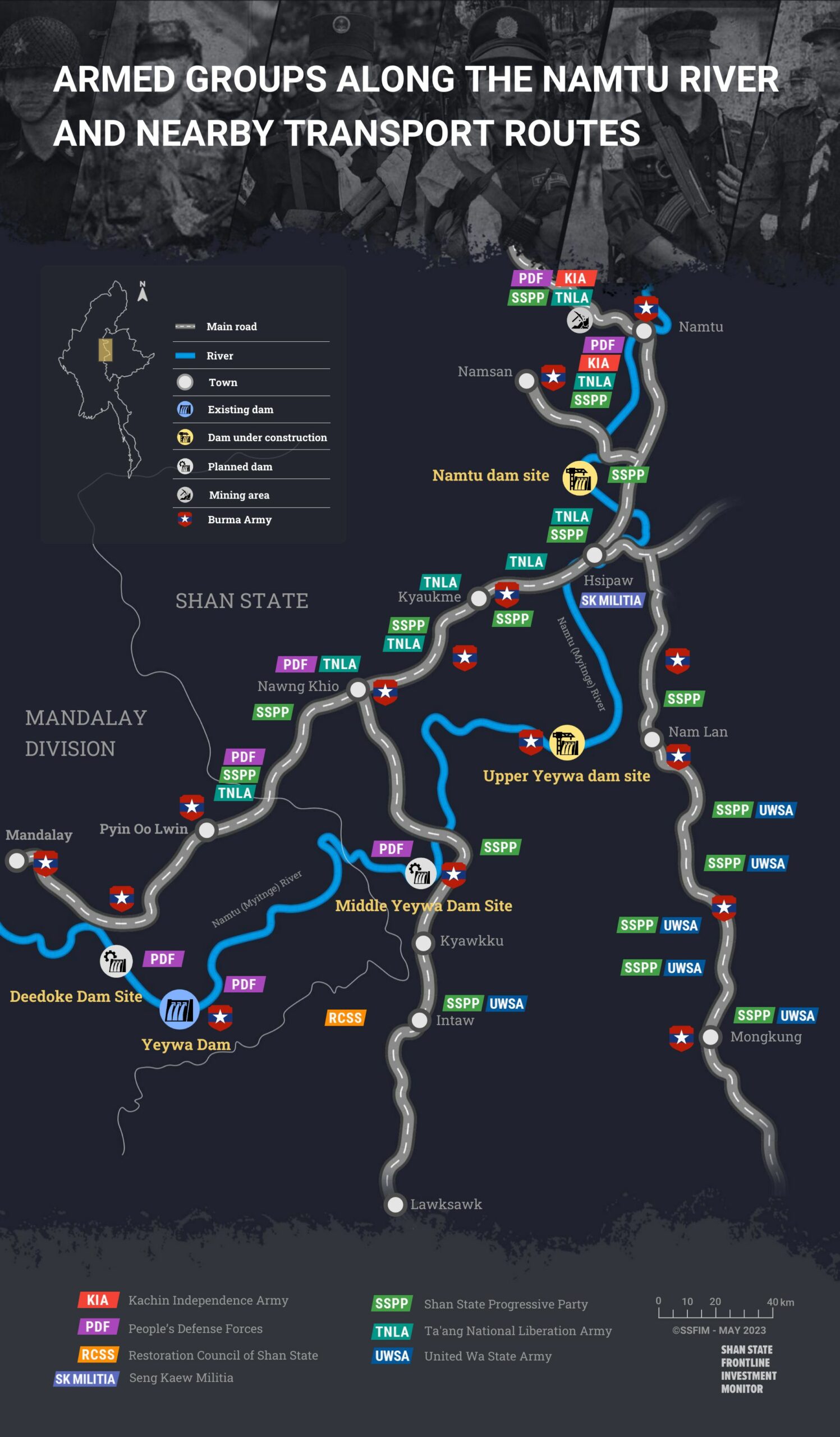A company owned by the United Wa State Army (UWSA) is proceeding at fast pace with construction of the Namtu dam on the Namtu/Myitnge river, 20 kilometers north of Hsipaw town in northern Shan State, despite community opposition.
A formal agreement to build the 210 megawatt Namtu (Hsipaw) dam was signed in Naypyidaw on April 29, 2022, between the UWSA’s Natural Current Energy Hydropower Company (NCEH) and the SAC regime’s Department of Electric Power and Planning. Since then, locals have noticed a significant increase of activity around the dam site, including large numbers of loaded trucks arriving from the direction of Lashio, and an influx of over a hundred Chinese workers, who speak no Burmese – supporting the widely held assumption this is a China-backed project.
NCEH had started preparatory work for the dam in 2017, long before formal approval of the project and before an environmental impact assessment (EIA) was carried out. This was revealed in a 2020 update by the community coalition, Action for Shan State Rivers, exposing how NCEH had been illegally clearing protected forest, building roads to the dam site, and constructing rows of concrete workers’ housing.
In 2018 and 2019, Nang Kham Aye, the Shan Nationalities’ League for Democracy MP for Namtu township, raised formal complaints about this unauthorized construction in the Naypyidaw parliament, calling for the Namtu dam project to be halted. However, no serious action was taken against NCEH, who continued on-site dam preparation.
NCEH, set up in 2013, describes itself on its website as working for “design, investment and implementation” of hydropower plants, but has no record of involvement in other projects apart from the Namtu dam. The company not only managed to obtain an MOU in 2014 for a Build-Operate-Transfer (BOT) agreement for the Namtu dam, but also a later BOT agreement for a 47-mile-long 230kV overhead transmission line from the Namtu dam to the Upper Yeywa dam in Kyaukme township. There is no public information about the terms of these BOT agreements, nor how NCEH will fund these costly projects – the Namtu dam alone will cost USD 436 million, according to an EIA scoping report by MyAsia Consulting in 2018.
The 210 MW Namtu dam is the third dam to be constructed on the Namtu river, out of a planned cascade of five dams. The 790 MW Yeywa dam on the lower Namtu was completed in 2010, while the 280 MW Upper Yeywa dam, started in 2008, is still not completed.

